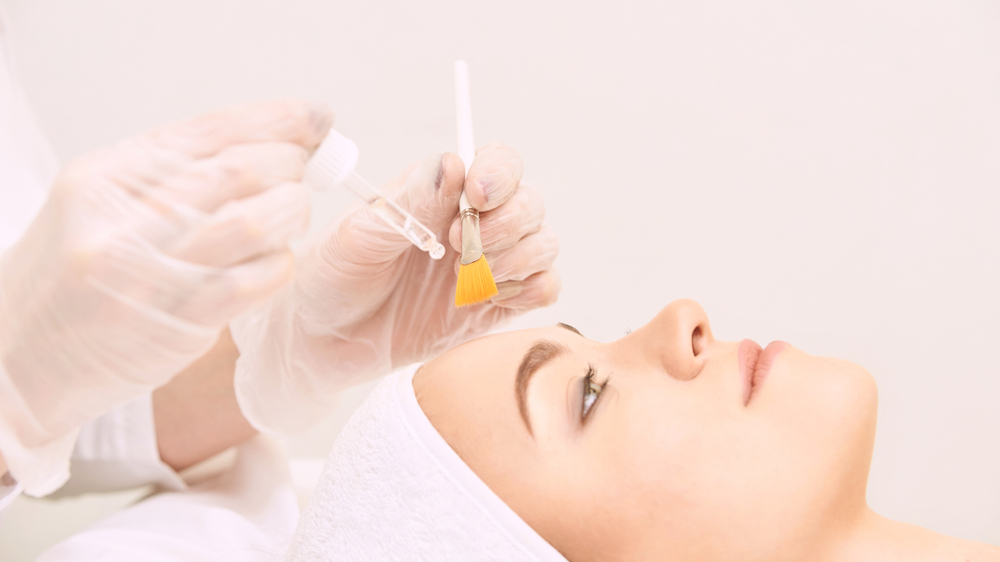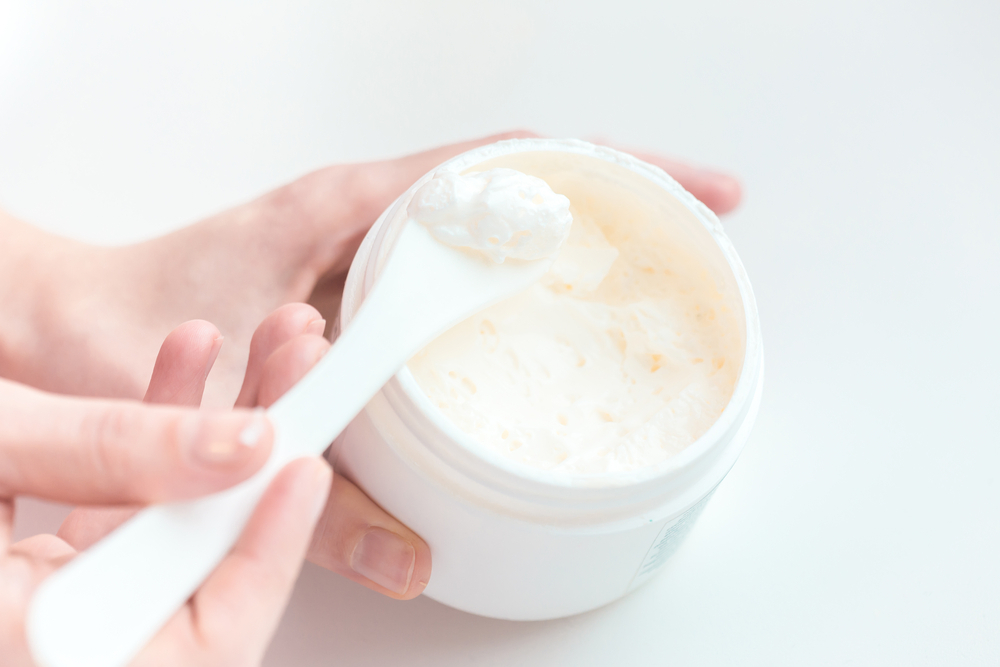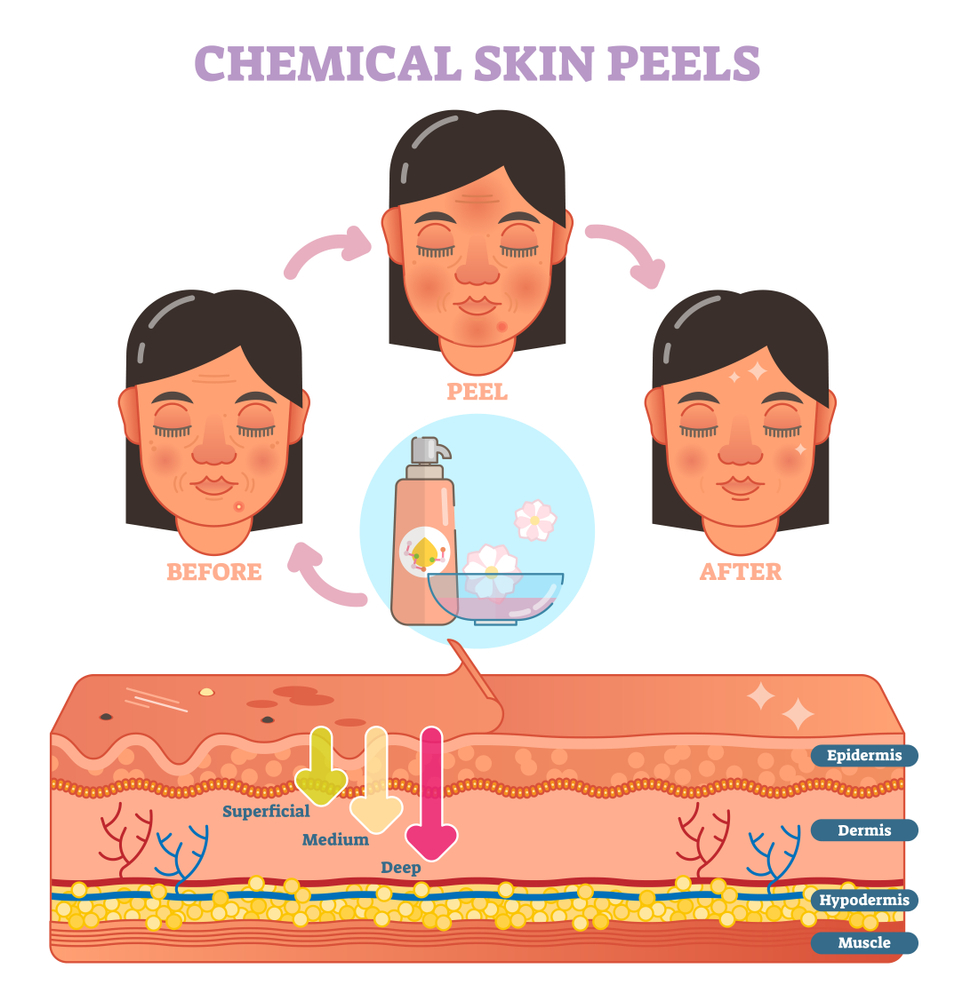Chemical Peeling in Iran
Best Centers, Affordable Prices
Using chemical peeling, dead cells are removed from the facial skin, neck or hands resulting in a healthy, fresh and radiant skin.
An Overview of Chemical Peels


Chemical peeling in Iran with the aim of separating dead cells from the skin surface and increasing the skin shine. By removing the outer layers of the skin, this cosmetic treatment results in a more healthy and radiant skin. It is also used for the face and other parts of the body, such as the hands and neck.
Chemical peeling in Iran, like many non-invasive therapeutic and beauty treatments, is expanding and we are witnessing the increasing use of this method. For this reason, performing this treatment in Iran is very high quality and affordable. You can enjoy top notch results of chemical peeling in Iran through our services in Medpaltrip in Iran. In the following article, we have discussed chemical peeling in Iran in detail including the methods, facial and eye peeling, and aftercare.
We also compare acid therapy with facial peeling with equipment.
Cost of Chemical Peeling in Iran
The cost of chemical peeling in Iran depends on various factors such as the clinic, the specialty of the doctor or therapist, the type of chemical for peeling, the time required for peeling, and side treatments for increasing the effectiveness of chemical peels. In addition, prices of anesthetics, post-exfoliation care and disposable equipment and supplies play an important role in determining the price of chemical peels in Iran. Considering all the above, the cost of chemical peeling in Iran is variable but it is still very reasonable and more cost-effective than more aggressive cosmetic procedures such as gel injections and surgeries.
Take a look at the charts below to compare chemical peeling prices in Iran with the rest of the world.

What is Chemical Peeling?

A healthy skin has distinguishable characteristics that sets it apart and make you more beautiful. Features of a healthy skin include:
- It is plain and soft with minimum stratum;
- Due to the production of collagen and elastin, it is firm with good lift (it is not loose and sagging);
- Has a uniform color and does not have dark or light parts areas;
- It has enough moisture and is not too dry or greasy;
- There are no wounds, damages or scars present;
- The skin repair process is carried out daily and after injury;
- It is resistant to damage and external harmful phenomenon;
The skin may lose its health due to various factors such as aging, weight gain and environmental damage, and lack some of the characteristics of healthy skin. In such cases, using the following cosmetic treatment can help us:
Filler Injection
They are compositions that are injected at the desired location.
Fat Injection
In this method, the dermatologist will remove fat from other areas of the body such as the abdomen, hips, thighs and buttocks and reinjects them into the desired area.
Laser Peeling
The laser beam from the Fractional RF and IPL devices deteriorate the surface layers and dead skin cells.
Hypnotherapy
This increases the production of collagen in the skin and improves the quality of the skin.
Carboxytherapy
In this method, carbon dioxide gas is injected to improve blood flow and help boost repairing in the area.
Microneedling
The very small needles of the microneedling device increases the collagen production and blood supply of the skin.
Physical Exfoliation With Microdermabrasion
Mechanical exfoliation removes the outer layers of the skin with special blades, resulting in the removal of skin scars and increasing collagen production and skin health.
Facelift By Surgery
In this method, the doctor removes excess skin of the target area to lift the face or body and get them a better shape.
The other alternative method is chemical peeling which is discussed below.
The term Peeling actually expresses removing the surface layers of the skin and damaged cells. Peeling with different methods such as using laser, physical treatment and chemicals causes the elimination of dead cells and increases the radiance of the skin. We are going to focus on Chemical Peeling.
In chemical peeling, doctors use acidic solutions to remove unhealthy layers of skin. For this reason, it is also called acid therapy. This method destroys the stratum corneum of the skin and promotes the growth of cells and collagen. In fact, chemical peeling causes a controlled damage to the surface of the skin that penetrates to a certain depth and improves the condition of the skin. Skin acid therapy has found its place among cosmetic treatments all over the world.
Considering the variety of cosmetic methods and related procedures, it is important to choose a specialist and experienced doctor. Medpaltrip makes this choice easy for you and will help you achieve your desired result.
The Compounds of Chemical Peelers
Acids and substances used in chemical peeling methods in Iran are different and each of these substances has its own characteristics and has a special effect on the skin. Common substances and acids used in chemical peels in Iran are as follows:
Acids:
- Lactic
- Glycolic
- Tartaric
- Malik
- Citric
- Hydroquinone
- Other types of alpha hydroxy
- A variety of beta-hydroxy acids such as salicylic
- Types of acetic acid such as TCA or trichloroacetic
- Dry ice or solid Co2
- Phenol
- Tretinoin
- Gordon Baker solution
- Jasner solution
- Resorcinol
- Vitamin C
Application And Advantages

- Improving the quality and appearance of skin;
- Increasing collagen and elastin production resulting in skin firmness;
- Adjusting the amount of skin oil and remove the fat stuck in the subcutaneous layers;
- Increasing the moisture, hydration, radiance and freshness of skin;
- Increasing blood flow to the skin;
- Reducing skin blemishes caused by sun, pregnancy, kukoma and uniform skin color;
- Preventing acne, treat pimples and remove previous acne scars;
- Uniforming skin color and surface;
- Slowing down the aging process and the effects of aging on the skin such including wrinkles around the eyes or the lips;
- Adjusting the pH with the acidity of the skin;
- Increasing the effectiveness of skin products and their better absorption;
- Eliminating dead cells and skin rejuvenation;
- Removal of wrinkles on the skin of the face and other areas;
- Removal of dark skin blemishes or skin hyperpigmentation;
- Closing large pores of the skin;
- Removing minor damages and sunburn;
- Getting rid of small scars and scars;
- Removing sunken acne and previous pimples on the face;
- Smoothing the surface of the skin;
- Removal of melasma and various skin blemishes of pregnancy;
- Getting rid of freckles;
- Regulating skin oil and reducing excess fat;
- Freshness and lightening of skin color;
- Reducing the depth of skin cracks and stretch marks;
- Reducing sagging skin;
- Exfoliation of the skin of the hands, neck, arms and chest.
Types of Chemical Peeling Treatments
Chemical peels in Iran target varying depths of the skin and we divide them into several categories based on the penetration of acids into the skin.
At-Home Chemical Peeling

There are countless types of fruit acids called peeling creams or exfoliating creams available in the market that can which candidates can use at home. Citric acid in citrus, malic acid in apples, tartaric acid in grapes and lactic acid in sour milk are in this category. However, The effectiveness of this method is superficial. This type of peeling is useful for chemical peels around the eyes and sensitive areas.
Superficial Chemical Peeling
In this method, the acids only penetrate into the epidermis (the surface layer of the skin) and eliminate previous skin damage. The acids used in this method are mainly diluted acids such as lactic acid, glycolic acid and salicylic acid. The effects of surface peeling include:
- Removing skin blemishes and pimples;
- Increasing the radiance and softness of the skin;
- Cleansing open pores of the skin;
- Treating active acne;
- Helping create an even and smooth skin surface;
- Removing dullness and dullness of the skin and mild sunburn.
Superficial chemical peeling does not require anesthesia and the skin automatically heals after the procedure. This method requires three to five sessions of treatment to result in a more lasting effect. After a week, you can undergo superficial chemical peeling again.
Medium Chemical Peeling
In Medium Chemical Peeling, the exfoliating acid penetrates the epidermis and the upper layers of the dermis (the underlying layer of the skin). The most commonly used acids are highly concentrated glycolic acid, TCA and ginseng solution. This type of peeling helps remove scars, blemishes and melasma, sunken acne scars, deeper wrinkles and severe sun damage. Medium chemical; peeling treatment takes about one to two weeks and is repeatable after a few weeks. This type of exfoliation creates a controlled second-degree burn stain and hence requires the supervision of a certified doctor.
Deep Chemical Peeling
In this method, the acid penetrates to the lower layers and has a greater therapeutic effect on the skin. It can heal more severe skin damages, deeper scars and wrinkles. Different types of phenols are usually used in deep chemical peels and so the peeling lasts up to two weeks. As a result, the inflammation may last for at least two weeks. This procedure requires local anesthesia and sedation. Deep chemical peeling must requires a trained and experienced doctor in order to avoid any complications. It is possible to do this type of peeling again after a few months.
Stages of Chemical Peeling In Iran

In Iran a specialist physician or plastic and cosmetic specialist performs chemical peeling. In deep chemical peeling, you will need local anesthetics at the target area a few minutes before.
After that, the staff will clean your skin and places the peeling solution on your skin. The staff prepare this solution in advance according to the conditions of your skin. You may feel a slight warmth, burning or itching sensation after applying the solution to the skin, which is normal.
This solution remains on the skin for a few minutes and is then washed off. After rinsing the solution, your doctor or operator will apply soothing oils to your skin to reduce skin inflammation. Your doctor will also prescribe painkillers or special creams to relieve skin inflammation. At this time, ask your doctor for information about post-treatment care.
The chemical peeling process in Iran takes only a few minutes and after that you can easily resume your daily activities.
Medpaltrip is by your side throughout the process.
Who Is Chemical Peeling Not For?
- People with unusual scars or wounds on the skin;
- People with discolorations caused by underlying disease or deep scars;
- Those who use skin medications that increase skin sensitivity;
- People that have been treating acne with other medications for the past 12 months;
- People who have large scars or colloids or are prone to colloids;
- Those with peeling around the eyes and areas with sensitive skin;
- People with cardiac illnesses;
- People taking birth control pills;
- Women during pregnancy or lactation.
Pre And Post-Treatment Preparations and Care
Pre-Treatment Preparation
- Pre-Treatment care in Iran may begin a few weeks before treatment. These treatments are performed with the aim of increasing the effectiveness of exfoliators.
- In some cases, special gels or creams, such as light exfoliating products or skin lightening products, are prescribed by your doctor to be used before chemical peeling to slightly reduce the thickness of the skin’s surface.
- Before beginning, you must be examined by a physician. If you have dark skin, chemical peeling may not be suitable for you.
- Taking Rakuten medication should be stopped for six months under a doctor’s supervision. Also, do not do chemical peels if you are taking contraceptives.
- Avoid chemical peeling if you have active lesions such as herpes.
- If your skin problems are due to an underlying disease or systemic problem, start treatment for the underlying agent before peeling.
- In case of suffering from favism, do not do chemical peeling.
- If you have done physical or chemical peeling, wait a few weeks for the peeling to happen again.
- Be sure to inform your physician if you are pregnant, breastfeeding, sick, or have certain health conditions.
- Avoid waxing or scrubbing the area for a week before chemical peeling.
- Use the appropriate sunscreen a few weeks before peeling.
Post-Treatment Care
- After chemical peeling, use the prescribed skincare solutions and creams for a few days to reduce the pain and irritation caused by peeling. It is necessary to use oil-free and pigment-free sunscreen with a suitable protective factor or SPF for up to a few weeks after chemical peeling.
- Inflammation after chemical peeling improves within a few days to two weeks, depending on the depth of acid penetration.
- For the first few days, try to sleep in a way that does not put pressure on the skin of the exfoliated area.
- If prescribed by your doctor, you may need several sessions of chemical peeling or a combination of chemical and physical peeling or lasers. Normally, after 3 to 5 peeling sessions positive results start to surface.
- Peeling begins after the exfoliating cream has worked on the skin and continues for several days until all the excess and dead skin is removed.
- Scratching and rubbing the skin of the area may cause infection and damage to the skin.
- Do not use pigmented cosmetics such as cream powder for a few days after chemical peeling as they may stain your skin.
- After peeling, keep your skin moisturized with moisturizing creams.
- Try not to be exposed to polluted air and environment and strong sunlight for a few days.
- See your doctor a few days after exfoliation to assess the condition of your skin and the number of sessions required.
- Avoid strenuous exercise and activity for a few days after chemical peeling, which causes skin perspiration and pressure on the skin of the area.
- Peeling results appear after a few days to a few weeks and will last for several months or even years in deep peelings.
- You can continue peeling until you get the desired result. (Your doctor should approve this.)
Complications
Chemical peeling is widely used in Iran and if you go to reputable centers, you will not experience complications. Of course, as with any therapeutic and cosmetic procedure, there may be limited side effects that can be minimized by consulting an experienced physician. Some complications of chemical peeling include:
- Redness, swelling, inflammation, burning and pain in the area that goes away after a few days to two weeks. After deep chemical peeling, the skin may become sensitive and red for several weeks.
- You may experience pimples after chemical peeling. If you are prone to pimples and acne, inform your physician.
- It is better to try to exfoliate in the second half of the year when there is less sunshine, to avoid sun damage.
A Comparison Between Chemical Peeling And Other Exfoliation Methods
- Strong chemical peeling often shows results after one session, while superficial peels as well as physical peels and lasers require several sessions of treatment.
- Chemical peeling brightens the skin color and brings more clarity and radiance.
- The solutions used in this method contain antioxidants that help improve the health and quality of the skin.
- In other skin exfoliation methods, repair occurs a little earlier than chemical peeling and the recovery period is briefly shorter.
- For cases such as deeper scars, laser treatment often provides better results. It is worth noting that in such cases, the performance of deep chemical peeling is the same as laser.
- In Iran, chemical peeling is sometimes combined with other exfoliation methods to be more effective. Naturally, it is better to undergo these treatments at intervals of several weeks.
- People with darker skin should consult a doctor before any peeling. In general, choosing the type of exfoliation for all people should be done by consulting with a doctor and after certain examinations.
Conclusion
Considering the fact that facial skin is sensitive and is more prone to skin damages than other areas, choosing a standard center and an experienced doctor for chemical peels in Iran is of paramount importance. The Medpaltrip group will make this easy for you and will connect you to experienced and professional physicians to get the desired result.
